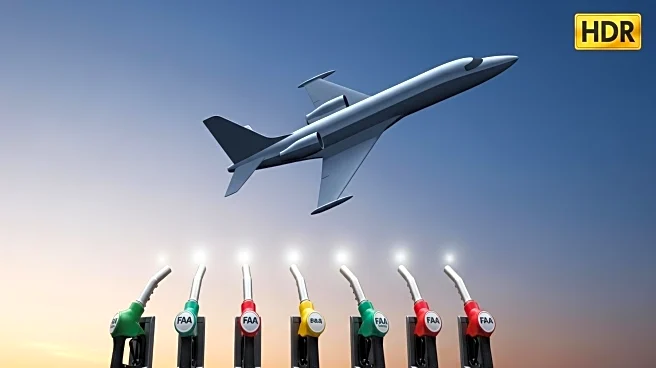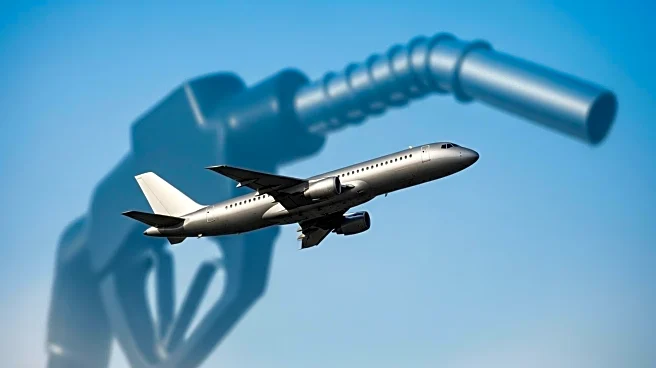What is the story about?
What's Happening?
The Aviation Research Group US has released a survey indicating a decline in Jet-A fuel prices across the United States for September 2025. The national average cost for a gallon of Jet-A fuel decreased by 8 cents compared to August 2025 and was down 9 cents from September 2024. The survey, which gathered data from over 200 fixed-base operators (FBOs), showed that all eight FAA regions experienced a price drop. The Northwest Mountain and Western Pacific regions saw the largest monthly decrease of 13 cents per gallon, while the New England region recorded the smallest decrease of 3 cents per gallon. The Western Pacific region had the highest price at $7.17 per gallon, whereas the Central region had the lowest at $5.85 per gallon.
Why It's Important?
The decline in Jet-A fuel prices is significant for the aviation industry, as fuel costs are a major component of operational expenses for airlines and private operators. Lower fuel prices can lead to reduced costs for airlines, potentially resulting in lower ticket prices for consumers and increased profitability for carriers. This trend may also encourage more flight operations and boost the aviation sector's economic activity. Regions with higher fuel costs, like the Western Pacific, may face competitive disadvantages compared to areas with lower prices, impacting regional aviation dynamics.
What's Next?
If the trend of declining fuel prices continues, it could lead to strategic adjustments by airlines and operators, including potential expansion of routes or increased flight frequency. Stakeholders in regions with higher fuel costs may seek ways to mitigate expenses or lobby for further price reductions. The aviation industry will likely monitor these price changes closely to adapt their business strategies accordingly.
Beyond the Headlines
The decrease in fuel prices may also have environmental implications, as lower costs could lead to increased flight operations, potentially affecting carbon emissions. Additionally, the disparity in regional fuel prices might prompt discussions on infrastructure investments or policy changes to balance costs across different areas.
AI Generated Content
Do you find this article useful?















